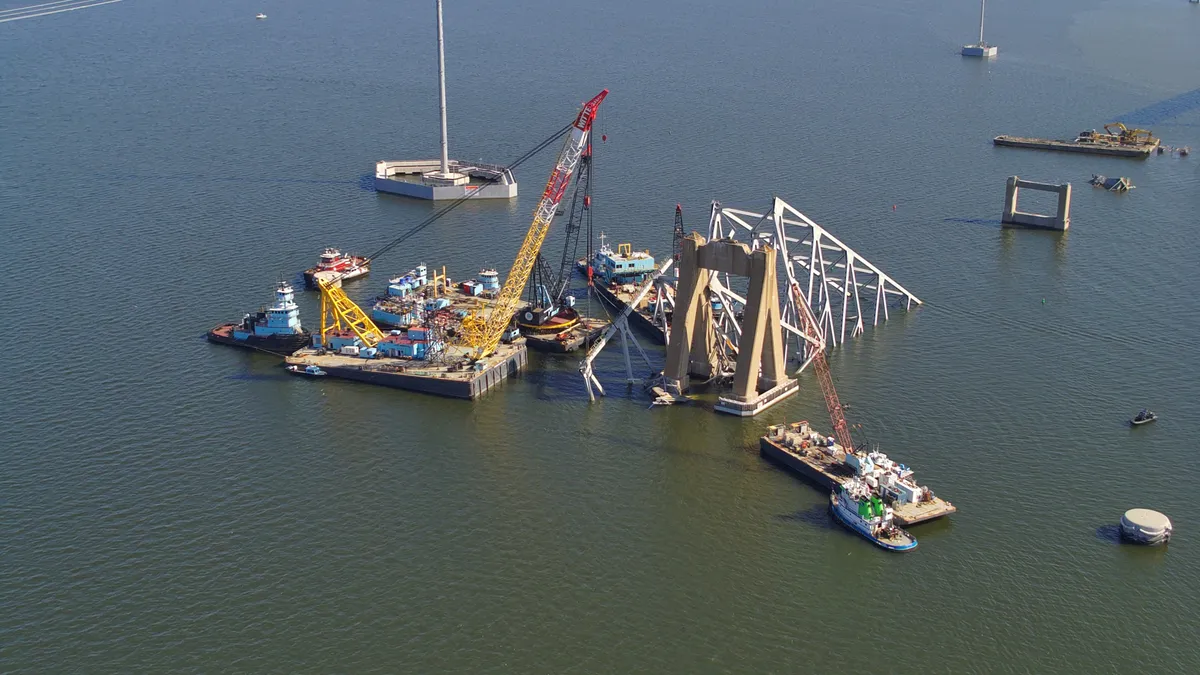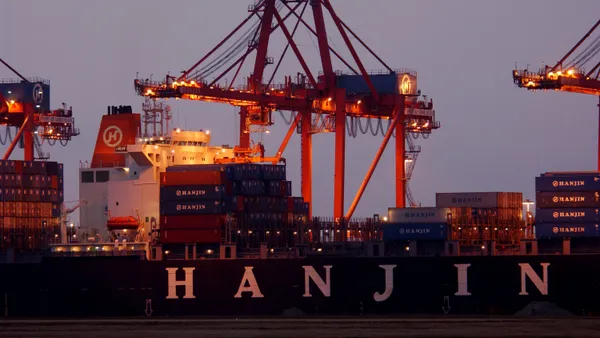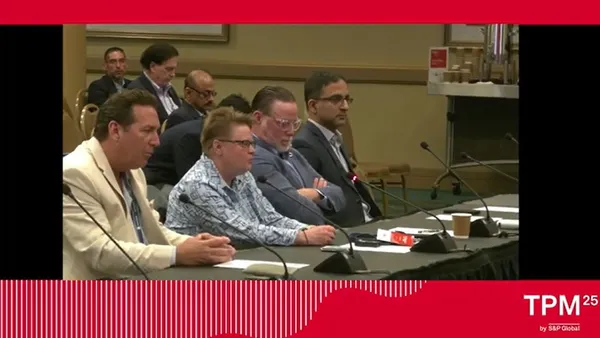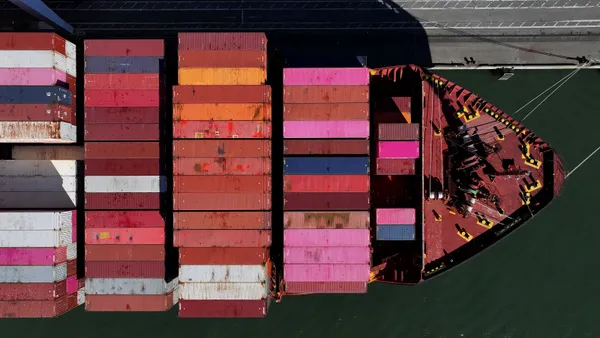Another channel is set to open at the Port of Baltimore, helping larger ships access the port after the March collapse of the Francis Scott Key Bridge.
The limited access channel is slated to be ready for transit by commercially essential vehicles on Thursday, April 25, Baxter Smoak, commander at the U.S. Coast Guard and operations section chief of the Key Bridge Response 2024, said in a marine safety information bulletin. The channel may stay open until April 30 if weather adversely impacts vessel transits.
The Fort McHenry Limited Access Channel is 35 feet deep and 300 feet wide, expanding the transit of larger vessels. The depth and available width are also subject to increase based on a pending survey analysis, Smoak said.
The Port of Baltimore can handle nearly 42% of the vessels of that size transiting through the port, including roll-on, roll-off cargo, auto carriers, some container traffic and other ships, Dredging Contractors of America CEO William Doyle said in a LinkedIn post.
After the limited channel closes, it will not be available again until about May 10 due to continued salvage efforts to clear the main channel.

The announcement from Smoak comes shortly after a third alternate channel was opened last week, called the Fort Carroll Temporary Alternate Channel. With a depth of 20 feet and a 300-foot horizontal clearance, it’s located on the northeast side of the main channel and is set to increase the types of vessels that can transit in and out of the Port of Baltimore.
“We estimate facilitating approximately 15 percent of pre-collapse commercial activity,” Capt. David O’Connell, Federal On-Scene Coordinator, Key Bridge Response 2024, said about the third channel in a press release.
Two other alternative channels have also been opened — the Sollers Point Temporary Alternate Channel and the Hawkins Point Temporary Alternate Channel. The channels have a controlling depth of 11 feet and 14 feet, respectively.
“Commercial traffic able to utilize these alternate channels should plan to do so, as to not impact traffic that is limited to the 35-foot draft channel,” Smoak said.
Editor's note: This story was first published in our Logistics Weekly newsletter. Sign up here.














